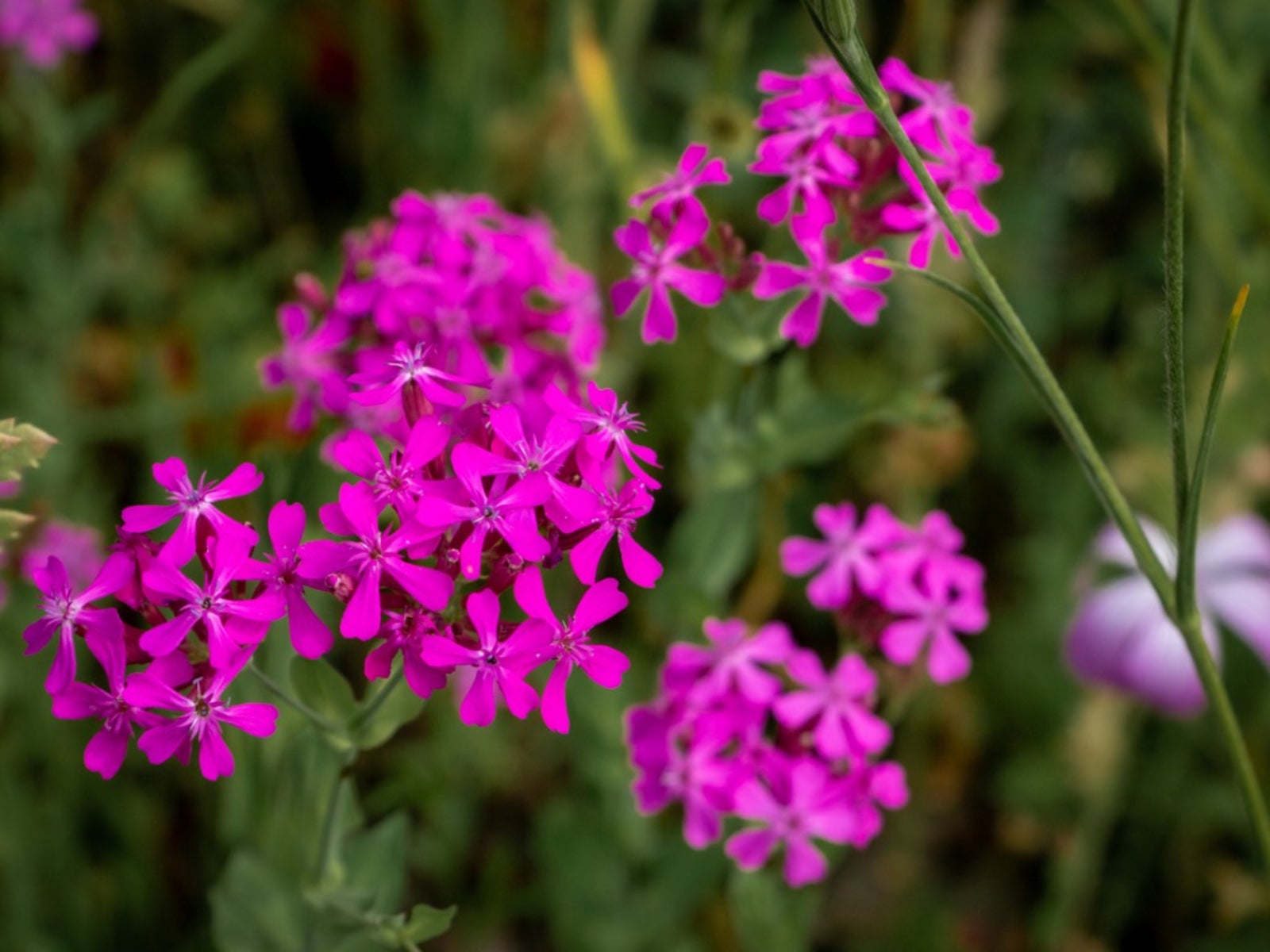
Dharaseeds
Catchfly Seeds
Estimated delivery between April 15 and April 18.
Catchfly Seeds
Catchfly (Silene spp.) is a charming and hardy perennial known for its vibrant, showy flowers and unique ability to attract a wide variety of pollinators, including bees and butterflies. With its delicate blossoms, which range in color from white and pink to deep red, Catchfly is perfect for adding a splash of color to garden beds, borders, and containers. These easy-to-grow plants are not only beautiful but also provide excellent ground cover and are a favorite of gardeners seeking to attract beneficial insects to their landscapes.
Key Features of Catchfly Seeds
Vibrant, Colorful Blooms
Catchfly flowers are typically five-petaled and come in a range of colors, including shades of pink, red, white, and purple. Some varieties feature striking combinations of colors, adding a bold and eye-catching contrast to any garden. The blooms have a delicate, star-like shape and a sweet fragrance, making them a delightful addition to flower beds.
Attracts Pollinators
Catchfly is known for attracting pollinators such as bees, butterflies, and hummingbirds, making it an essential plant for any pollinator-friendly garden. Its nectar-rich flowers are especially beneficial to honeybees and other beneficial insects.
Compact Growth Habit
This plant is relatively compact, growing to a height of 1-2 feet, making it ideal for borders, containers, or smaller garden spaces. It forms a neat, bushy mound, with dark green foliage providing an attractive backdrop to its colorful flowers.
Easy to Grow
Catchfly is low-maintenance and easy to grow, thriving in a variety of soil types and weather conditions. It's an excellent choice for beginner gardeners or those looking to add a colorful and hassle-free option to their gardens.
Benefits of Catchfly Seeds
Perfect for Pollinator Gardens
Catchfly is a fantastic choice for pollinator gardens, as it provides nectar for bees, butterflies, and hummingbirds. By planting Catchfly, you can create a vibrant, thriving environment for these important insects, supporting local ecosystems.
Low Maintenance Care
Catchfly requires minimal care once established. It is drought-tolerant and can grow in poor soil conditions, making it ideal for low-maintenance gardens. Water the plant regularly during dry spells, and occasional deadheading will encourage continuous blooms.
Ideal for Ground Cover
Catchfly can be used as ground cover due to its spreading nature. It helps to suppress weeds and provides a carpet of color in garden beds or between larger plants, making it a great filler for bare spots.
Resistant to Deer and Rabbits
Catchfly is relatively resistant to browsing by deer and rabbits, which makes it a reliable addition to gardens in areas where these animals are a concern.
How to Plant and Care for Catchfly Seeds
Starting Seeds
Catchfly seeds are best started indoors 6-8 weeks before the last frost date in your area. Plant the seeds in a seed-starting mix and press them lightly into the soil. Keep the soil moist and maintain a temperature of 65-70°F (18-21°C). Once the seedlings have developed a few leaves, harden them off by gradually introducing them to outdoor conditions.
Transplanting Seedlings
Once the seedlings have grown large enough, transplant them into the garden. Choose a location with well-draining soil and full to partial sunlight. Catchfly thrives in full sun but can tolerate light shade, especially in hotter climates.
Watering
Catchfly is drought-tolerant once established, but regular watering during dry spells will promote better growth and more blooms. Water the plant at the base to keep the leaves dry and reduce the risk of fungal diseases. Allow the soil to dry out slightly between waterings.
Lighting
Catchfly prefers full sunlight for at least 6 hours a day. It can also tolerate some partial shade, but flowering may be reduced if the plant doesn't receive enough light.
Fertilizing
Catchfly does not require heavy fertilization. If desired, you can feed the plant with a balanced, water-soluble fertilizer once or twice during the growing season. Over-fertilizing may result in excessive foliage growth at the expense of flowers.
Harvesting and Propagating Catchfly
Seed Saving
Once the flowers have faded, the seed pods will mature and begin to dry. Collect the seeds when the pods are fully dried, but before they open. Store the seeds in a cool, dry place until you're ready to plant them next season.
Propagation by Cuttings
Catchfly can also be propagated through cuttings. Take a healthy cutting from the plant, remove the lower leaves, and place it in a container of water or soil. Once the cutting has developed roots, it can be transplanted into the garden.
Perfect For:
- Pollinator Gardens: A must-have for attracting bees, butterflies, and hummingbirds.
- Garden Borders: Adds color and interest to garden edges, especially in sunny spots.
- Container Gardens: Ideal for pots and hanging baskets due to its compact size.
- Low-Maintenance Gardens: Great for gardeners who want colorful blooms without a lot of upkeep.
Why Choose Catchfly Seeds?
Catchfly Seeds are an excellent choice for gardeners looking to add vibrant color and attract beneficial pollinators. Whether you're looking to enhance a pollinator garden, fill out a border, or add easy-care plants to your landscape, Catchfly is a fantastic option. Its low maintenance requirements, striking blooms, and ability to thrive in a variety of growing conditions make it a versatile addition to any garden. With its ability to draw in bees and butterflies, Catchfly not only beautifies your space but also contributes to a healthier, more biodiverse garden.







